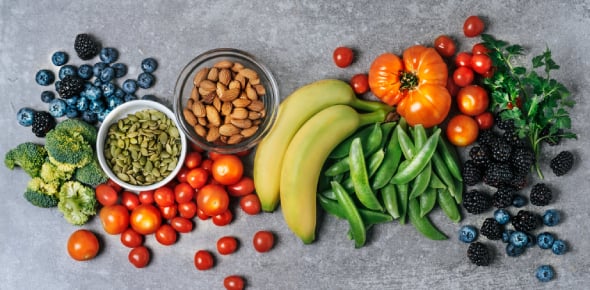Diet And Nutrition Advanced - Qp2
-
IgG stands for __________.
-
Immunoglobulin (type E)
-
Immunoglobulin (type G)
-
Immunoglobulin (type M)
-

Diet and Nutrition Advanced - QP2 evaluates understanding of digestion, hormonal influences on weight, and nutrient absorption timing. It's designed to enhance knowledge in advanced nutrition, focusing on biochemical and physiological processes relevant to health professionals.
Quiz Preview
- 2.
An antibody is a specialised protein produced by the body’s immune system to fight foreign bodies such as viruses, bacteria and toxins.
-
True
-
False
Correct Answer
A. TrueExplanation
An antibody is indeed a specialized protein that is produced by the body's immune system to combat foreign bodies like viruses, bacteria, and toxins. It recognizes and binds to specific antigens on these foreign substances, marking them for destruction by other immune cells. This immune response is crucial in defending the body against infections and maintaining overall health.Rate this question:
-
- 3.
When glucose is obtained from our food, some of it is used as fuel and some is stored in the form of glycogen in the liver as a short-term reservoir of nutrients.
-
True
-
False
Correct Answer
A. TrueExplanation
Glucose obtained from our food is indeed used as fuel for our body's energy needs. Additionally, some of the glucose is stored in the liver as glycogen. This glycogen serves as a short-term reservoir of nutrients that can be readily accessed when our body needs an extra supply of glucose. Therefore, the statement is true.Rate this question:
-
- 4.
The gastrointestinal system is basically a hollow tube approximately 4.5m.
-
True
-
False
Correct Answer
A. TrueExplanation
The statement is true because the gastrointestinal system refers to the organs involved in the digestion and absorption of food, and it is indeed a hollow tube that extends approximately 4.5 meters in length. This tube includes organs such as the mouth, esophagus, stomach, small intestine, and large intestine, which are all connected to form a continuous pathway for food to travel through.Rate this question:
-
- 5.
Insulin is a very powerful hormone with a major role in weight control, and it is for this reason it is known as the 'fat hormone'.
-
True
-
False
Correct Answer
A. TrueExplanation
Insulin plays a crucial role in weight control as it regulates the storage and utilization of glucose in the body. When insulin levels are high, it promotes the storage of excess glucose as fat, leading to weight gain. Additionally, insulin inhibits the breakdown of fat, further contributing to its reputation as the "fat hormone." Therefore, it is accurate to refer to insulin as the "fat hormone" due to its significant impact on weight control.Rate this question:
-
- 6.
It takes about ______ for nutrients to be broken down and begin entering the bloodstream following a meal.
-
Less than an hour
-
An hour or more
-
More than two hours
Correct Answer
A. An hour or moreExplanation
After a meal, the process of digestion begins in the stomach and continues in the small intestine. The food is broken down into smaller molecules, including nutrients, through the action of enzymes. These nutrients are then absorbed into the bloodstream through the walls of the small intestine. This entire process can take varying amounts of time depending on factors such as the composition of the meal and individual metabolism. Therefore, it is possible for nutrients to start entering the bloodstream within an hour, but it can also take longer, hence the answer "an hour or more".Rate this question:
-
- 7.
Psychologists use the term ‘commitment’ to describe the driving force behind an action or behaviour.
-
True
-
False
Correct Answer
A. FalseExplanation
Psychologists do not use the term 'commitment' to describe the driving force behind an action or behavior. Instead, they use terms like motivation, intention, or determination to explain the factors that influence behavior. Therefore, the given statement is false.Rate this question:
-
- 8.
Food taken in from the mouth must be broken down by ______ into individual molecules.
-
Amino acids
-
Hydrochloric acid
-
Lactic acid
Correct Answer
A. Hydrochloric acid -
Quiz Review Timeline (Updated): Mar 19, 2023 +
Our quizzes are rigorously reviewed, monitored and continuously updated by our expert board to maintain accuracy, relevance, and timeliness.
-
Current Version
-
Mar 19, 2023Quiz Edited by
ProProfs Editorial Team -
Dec 04, 2013Quiz Created by
Jackson Matthews
 Back to top
Back to top


